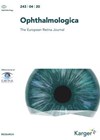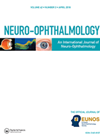Correlation between aqueous flare and macular microvascular status in diabetes mellitus
7 April 2021
| Sofia Rokerya
|
EYE - Vitreo-Retinal
|
Aqueous flare, Diabetic retinopathy, Inflammation, Laser flare-cell meter, Microvascular injury, Optic coherence tomography angiography
The authors report a cross-sectional study which was conducted to investigate the correlation between aqueous flare and macular microvascular status, assessed by optic coherence tomography angiography (OCTA) in diabetes mellitus. Fifty-two diabetic patients with non-proliferative retinopathy, 44 diabetic patients without...
Pupil responses in diabetes
4 February 2021
| Claire Howard
|
EYE - Neuro-ophthalmology
|
Diabetes mellitus, Diabetic retinopathy, dynamic pupillometry, pupil diameter, static pupillometry
This study aimed to investigate pupillary involvement in patients with type 2 diabetes mellitus (DM) and to evaluate any relationship between severity of diabetic retinopathy (DR) and pupillary responses. Participants included 133 individuals in four groups: proliferative DR (n=21), non-proliferative...







